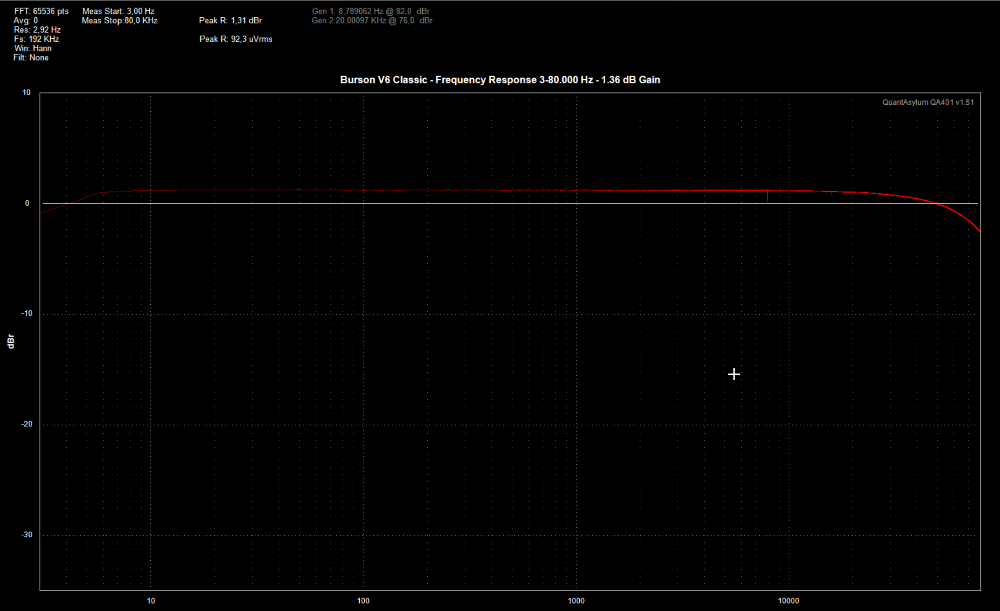Following up on the THD measurement of the Burson V6 Classic (which also shows the test setup and limitations), here's its frequency response.
These measurements are showing up now because the QA401 is not linear. The measurements had to be compensated for that.
The frequency response is measured with an output of 0 dBV / 1V rms and a gain of 1.36 dB / 1.17X.
The Burson V6 Classic's gain is 0.1 dB lower than expected. It performs great otherwise, showing -0.2/-0.1 dB all the way from 10 Hz to 80 kHz. This is as high as I can go with 192 kHz sampling frequency. The graph uses a relative scale since it would otherwise disappear under the 0 dB horizontal line.
But how high does it go? Time to whip out the Rigol DG1022 function generator and the Rigol DS1054Z oscilloscope. ~1.5 MHz is the answer (with the noise starting at about -20 dB below the signal). Go beyond that and the amplification still holds for a while, but the signal is no longer a sinus.
The signal is down -3 dB at approx. 3.7 MHz. By then it's a pure saw tooth signal.
